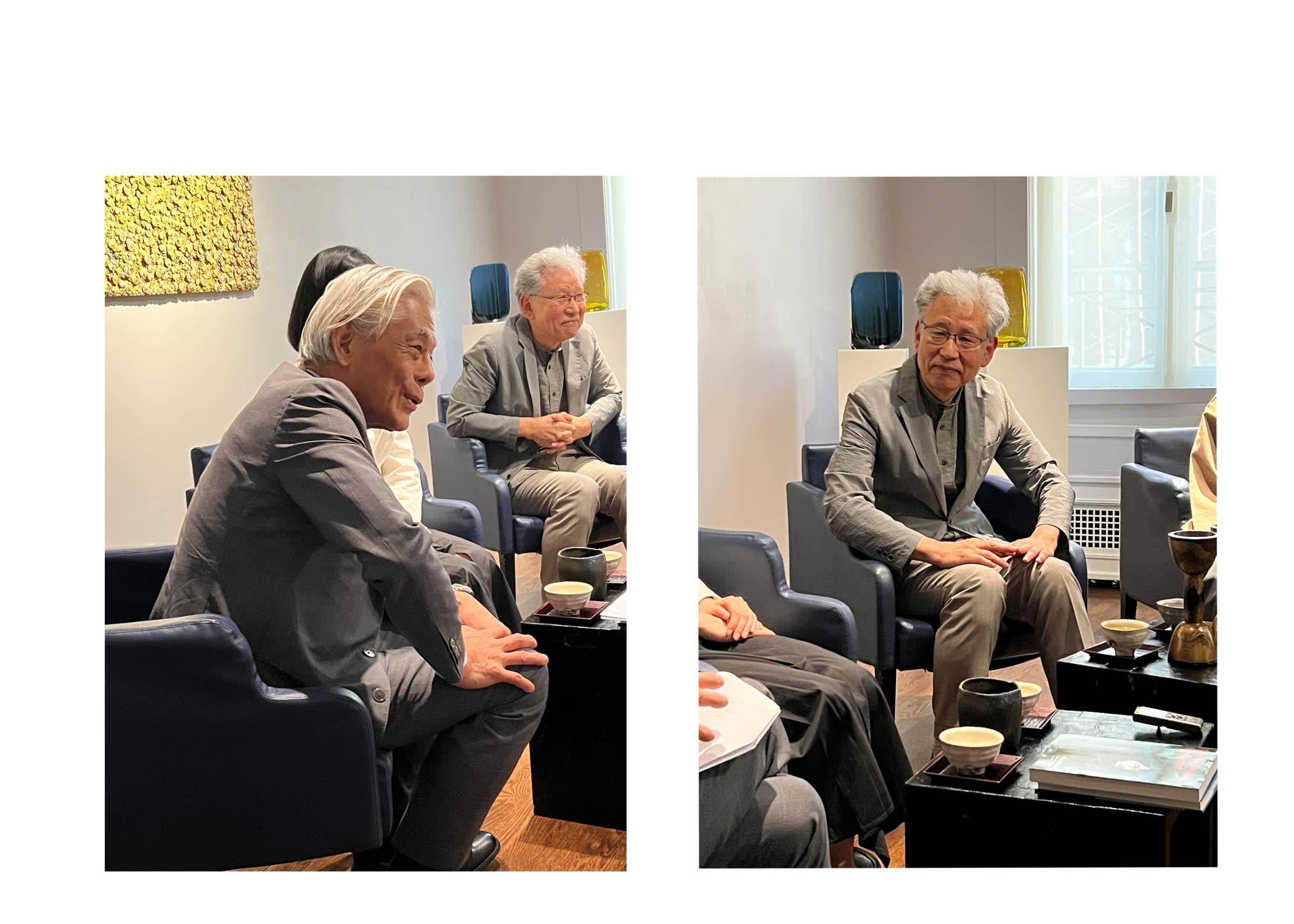

Kondo: Shoko-san, you've been promoting Japanese craftsmanship as a gallery owner in America for 15 years. Could you share your insights on the differences in understanding between American clients and Japanese customers?
Shoko: Reflecting on these 15 years in business, it all comes back to the power of handmade craftsmanship. Operating the gallery for 15 years, I've conveyed the unique Japanese aesthetic that speaks to the senses—sight, touch, and more. Particularly striking was the time during the pandemic. Society, friends, and the city—all required distancing for several years. Amidst this, our Magic of Teabowl Exhibition received unexpectedly overwhelming responses. Many clients expressed how they found solace in the warmth of handmade crafts. It was a realization that the time and affection invested by the artists truly resonated with buyers. There's a broad spectrum of cultural understanding; some are deeply knowledgeable about selected materials, while others simply have a favorable impression of Japanese art. It's honestly challenging to find a common ground as an audience in New York, America.

Kondo: Functional artworks like tea utensils and tableware often provoke surprise. How do you communicate their artistic value, uniqueness, and significance as starting points for crafts?
Okura-sensei: From my experience, it's about shared experiences rather than verbal communication. In 2022, in a cave in Okinawa where a 23,000-year-old fishing rod fossil was excavated, we staged the Noh performance "Hagoromo." The echoes within the cave intertwined the ancient sounds of daily life with the performance, creating an exceptional experience akin to time travel. Visitors echoed similar sentiments, emphasizing the importance of shared experiences over words. In contemporary times, where simplicity and time performances are often valued, human emotions move in a direction opposite to time performances. With various modern influences, humans are losing their humanity alongside technology. Emotions that can only be experienced through our efforts and labor are equally present in both performers and audiences.
Kondo: Could you elaborate more on technology? The contrast between handmade craftsmanship and technology seems stark.
Okura-sensei: Technology allows for documentation and education across generations. Traditional crafts and performing arts passed down orally have faced difficulties learning techniques flourishing two or three generations ago. In this regard, technology's contribution lies in preserving images and colors from those times. There's an indelible line between what we three speakers strive to accomplish now and what industrial AI production lines create. We want to continue contributing to creating traditions for the future, leveraging various modern powers.
Kondo: The role of technology in transmitting traditional arts across generations is indeed an intriguing topic. What are your thoughts, Professor Murose?
Murose-sensei: When considering the essence and value of traditional crafts, I always return to their origins as tools—substitutes for natural items like leaves and stones. These are items essential for eating and living, imbued with meaningful designs. Crafts are a world where creation and survival are intertwined. While human evolution may lead some to find satisfaction in ego, design prowess, and self-assertion, ego often leads to conflict, hindering friendly interaction and development.

The "simplest living" as a human being is crucial.
 about Genjiro Okura
about Genjiro Okura
about Kazumi Murose
Kazumi Murose, a National Living Treasure in lacquer art, was born in 1950 and trained by his father, Kazuo Murose. He has been pivotal in preserving lacquer cultural properties, reviving lost techniques in projects like the restoration of Kotohira Shrine ceiling paintings and Ryukyu ancient musical instruments, and contributing to the analysis of Shosoin treasures. Making his debut in the Japan Traditional Art Crafts Exhibition in 1986, he has since received numerous awards and was designated a National Living Treasure in 2008. Internationally, his work was featured in the "Japanese Lacquer: A Modern Master" exhibition at the Metropolitan Museum of Art (1995), the "Japan Culture and Traditional Arts" exhibition in Paris (2003), and the "Japanese Lacquer: Tradition and Innovation" exhibition at the British Museum (2010), where his fusion of tradition and innovation was highly acclaimed.
about Seiichi Kondo